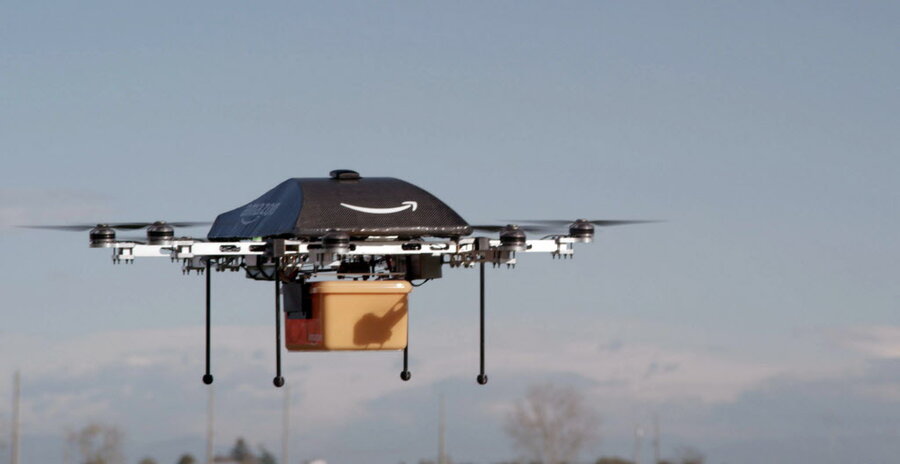Can police use eagles to pluck hostile drones out of sky?
Loading...
Sometimes a low-tech solution is the best option to treat to a high-tech problem. That’s what Dutch company Guard from Above is banking on, as it turns to nature to help police snatch potentially hostile drones out of the sky.
In a video released Sunday, the company shows how it trains eagles, highly skilled predators, to grab flying drones with their powerful talons and instinctively drop them in a safe place, away from other birds or people. In exchange for intercepting flying objects they can’t eat, the eagles are rewarded with food that is more appetizing than an unmanned aerial vehicle, reports IEEE Spectrum.
One of the company’s first customers is the Dutch National Police, which is testing the eagle option along with more high-tech solutions to remove drones from areas where they are banned: above large events or near airports, as the Associated Press reported.
“Everyone can get hold of a drone, and that includes people who want to misuse them,” police spokesman Michel Baeten told a Dutch news program.
“It is a multifunctional piece of equipment and that means you can launch an attack with them as well,” he said.
Drones are controlled remotely from the ground and have many useful applications, such as surveying damage after a disaster, monitoring illegal whaling, or taking aerial photos of ancient ruins for archaeologists. But they can also can be armed to assassinate, equipped to spy, or physically interfere with emergency responders or aviation traffic.
Larger drones have been used by the US and other military for several years in areas where manned flight is too risky or difficult, and to carry out targeted killings. And now the popularity of smaller drones among recreational users is surging. The Consumer Technology Association, an Arlington, Va.-based technology business association, projected that 700,000 drones were sold in the US alone last year, a 63 percent increase from 2014.
As The Christian Science Monitor’s editorial board wrote last year:
In the world of aircraft, drones may be the most alarming – and disruptive – technology in the skies. One expert compares current understanding of drones to the way airplanes were viewed at the end of World War I: Everyone knew they would somehow be game changers, but no one was quite sure exactly how. A generation later, air superiority became a key to victory in World War II.
While governments around the world grapple with how to regulate consumer drones, it’s no wonder that Dutch police are looking into creative solutions for dealing with possible threats to public safety.
As Guard from Above said in a press announcement, “Sometimes the solution to a hypermodern problem is more obvious than you might think.”
Indeed, untrained hawks have already proven they can handle drones, The Christian Science Monitor reported in 2014.
Christopher Schmidt, a computer programmer, was flying his Phantom FC40 drone over Magazine Park in Cambridge, Mass. on Oct. 8. He bought it six months ago and takes it out several times a week. On this particular day, Mr. Schmidt had attached a GoPro Hero 3+ Black to take a video of the trees changing color.
As he was operating the drone, Schmidt noticed a hawk was circling, and he tried to move the drone out of the way. Then the hawk suddenly attacked the drone from above. Schmidt captured everything and uploaded the video to YouTube.
"I first thought, 'That will be an interesting shot,' and then, as he hit the [drone], I thought 'kill the motors so I don't hurt the hawk!' " Schmidt says in an e-mail to The Monitor. He says turning the motor off is what caused the drone to fall out of the sky.








